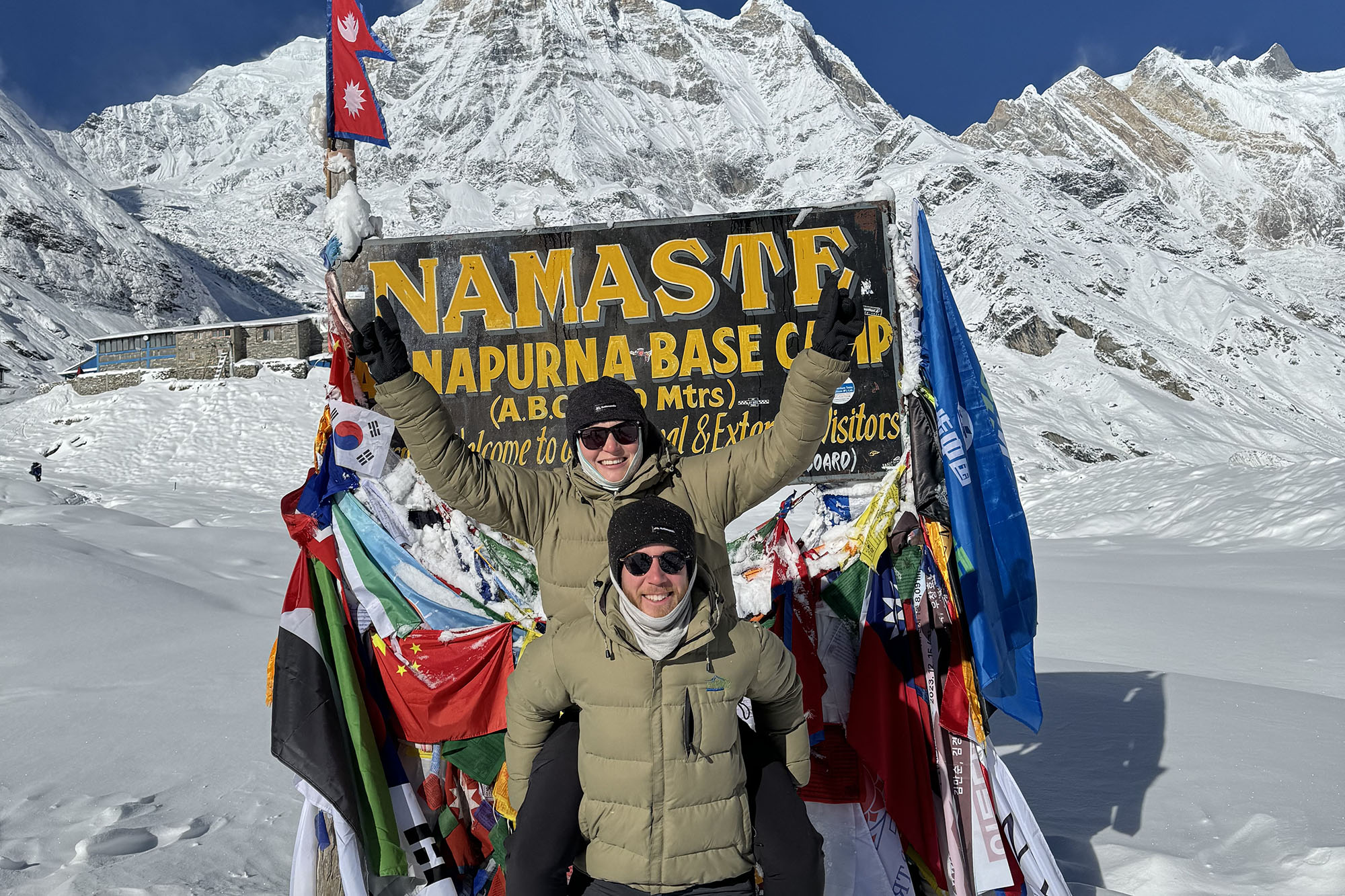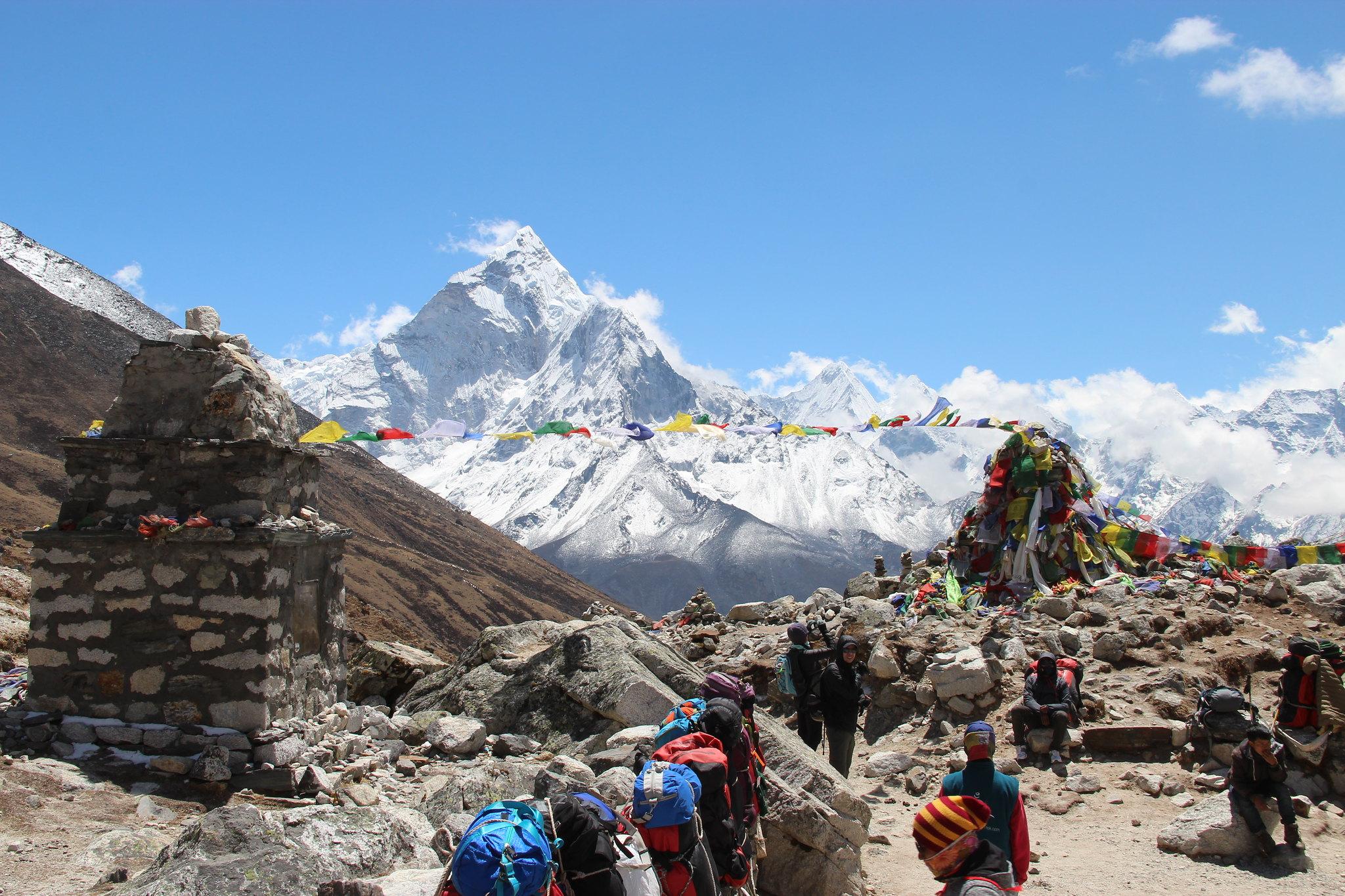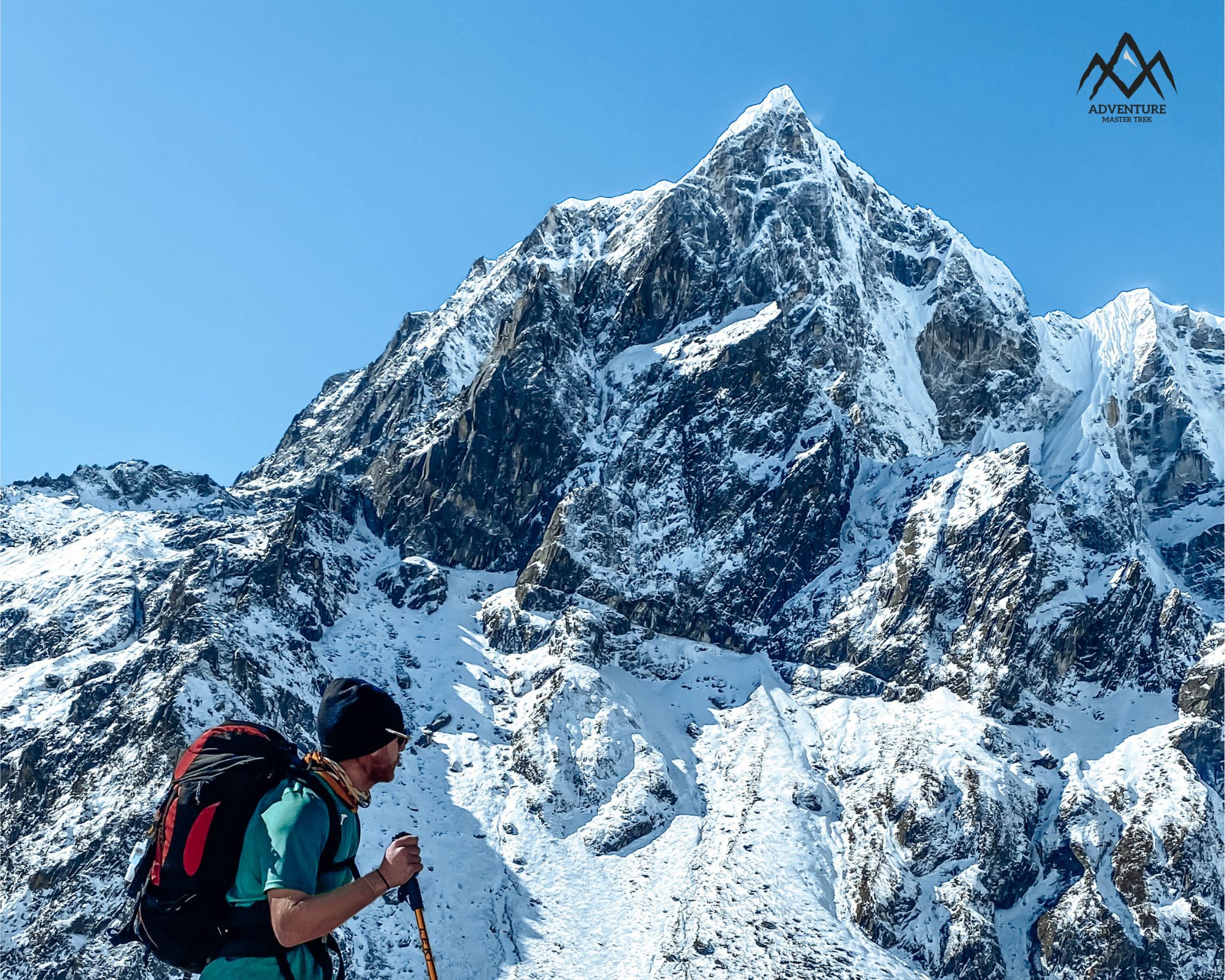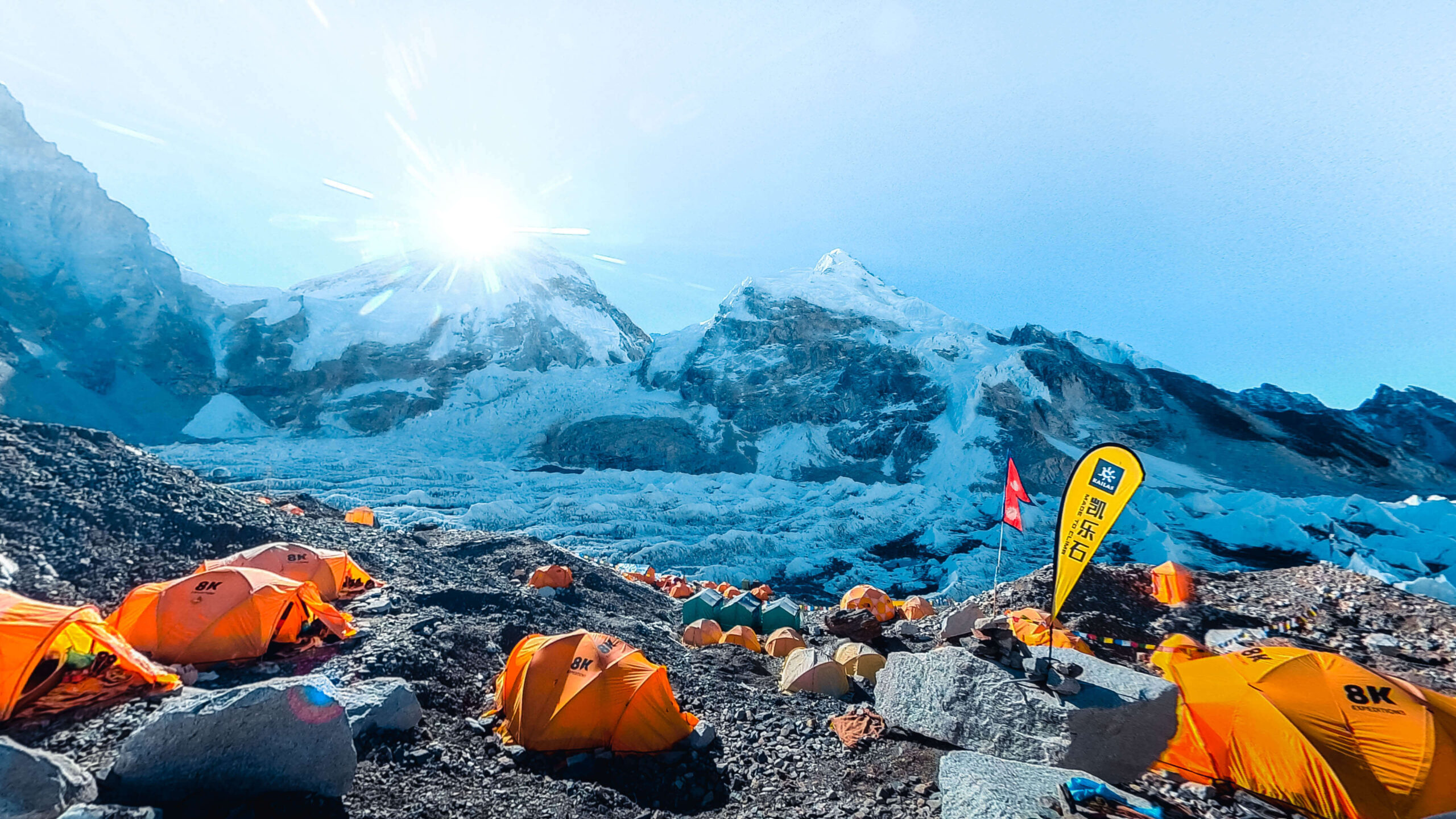Among the myriad of trekking options, the Annapurna Base Camp (ABC) and Everest Base Camp (EBC) treks stand out as two of the most iconic routes, each with its own allure and adventure. In this comprehensive guide, we’ll delve into the intricacies of both treks to help you make an informed decision and choose the ultimate Himalayan adventure that aligns with your preferences and aspirations.

- Trip Duration:
One of the key considerations when planning a trek is the duration of the journey. The ABC trek typically spans between 7 to 12 days, depending on the specific itinerary and pace of the trekker. Starting from Nayapul or Phedi, the trek gradually ascends through picturesque villages, lush forests, and terraced fields before reaching the base camp nestled at the foot of the majestic Annapurna massif.
On the other hand, the EBC trek is slightly longer, usually taking around 12 to 16 days to complete. Beginning with a thrilling flight to Lukla, trekkers traverse through the legendary Khumbu region, passing through Sherpa villages, suspension bridges, and high-altitude landscapes adorned with prayer flags, with the ultimate goal of reaching the base camp of the world’s highest peak, Mount Everest.
- Trip Difficulty:
Both the ABC and EBC treks present moderate to challenging levels of difficulty, requiring a reasonable level of physical fitness and mental resilience. However, there are some notable differences in terms of terrain and altitude that influence the overall difficulty of each trek.
The EBC trek is renowned for its higher altitudes, with trekkers ascending to over 5,000 meters above sea level at Everest Base Camp. This elevation gain, coupled with steep ascents and descents, can pose significant challenges, particularly in acclimatization and managing altitude-related symptoms such as altitude sickness.
On the other hand, the ABC trek, while still demanding, reaches a maximum altitude of around 4,130 meters at Annapurna Base Camp. The gradual ascent and lower altitude compared to EBC make it slightly more manageable for some trekkers, although proper acclimatization and physical conditioning are still essential.

- Trip Comfort:
Comfort is another crucial factor to consider when embarking on a trekking adventure, especially when trekking for multiple days in rugged mountain terrain. Both the ABC and EBC routes offer accommodation in tea houses and lodges along the trail, providing basic amenities such as beds, blankets, and meals.
In general, accommodation along the ABC route tends to be more comfortable compared to EBC. Tea houses in the Annapurna region are relatively well-equipped and cozy, with options for private rooms and hot showers available at some stops. However, comfort levels can vary depending on the specific tea house and the season of trekking.
On the EBC trek, accommodation is more basic, especially at higher elevations. Tea houses in the Everest region are often rustic, with shared dormitory-style rooms and communal dining areas. While this adds to the authentic Himalayan experience, it may not be as comfortable for some trekkers, particularly those accustomed to more luxurious accommodations.
- Cost:
Cost is an important consideration for many trekkers, especially those traveling on a budget or planning an extended trip. The overall cost of the trek includes various factors such as permit fees, transportation, accommodation, meals, and additional expenses.
In general, the Everest Base Camp trek tends to be slightly more expensive than the Annapurna Base Camp trek. One significant factor contributing to this difference is the cost of flights to Lukla, the gateway to the Everest region. Flights from Kathmandu to Lukla can be relatively expensive, especially during peak trekking seasons, adding to the overall cost of the EBC trek.
Additionally, permit fees for the Everest region are higher compared to the Annapurna region, further contributing to the overall cost. However, it’s essential to note that the total cost of the trek can vary depending on factors such as the duration of the trek, accommodation preferences, and additional expenses such as souvenirs or trekking gear.
- Cultural Experience:
One of the most rewarding aspects of trekking in Nepal is the opportunity to immerse oneself in the rich cultural heritage of the region, interacting with local communities, and experiencing their traditions firsthand. Both the ABC and EBC treks offer unique cultural experiences, albeit in different settings and with distinct ethnic groups.
The Everest region is predominantly inhabited by the Sherpa community, renowned for their mountaineering prowess, warm hospitality, and unique cultural practices. Trekking through Sherpa villages such as Namche Bazaar, Tengboche, and Khumjung provides trekkers with insight into Sherpa traditions, Buddhism, and the Sherpa way of life.
On the other hand, the Annapurna region is home to diverse ethnic communities such as the Gurungs, Magars, and Thakalis, each with its own distinct cultural identity. Trekking through traditional villages like Ghandruk, Chhomrong, and Sinuwa offers trekkers the opportunity to interact with local residents, learn about their customs, and partake in cultural festivities if timing aligns with local festivals.
- Landscape:
The landscapes encountered on the ABC and EBC treks are as diverse as they are breathtaking, showcasing the natural beauty and geological wonders of the Himalayas. From verdant valleys and cascading waterfalls to rugged mountain peaks and glacial moraines, each route presents its own unique tapestry of scenery and natural wonders.
The ABC trek traverses through the lush forests of the Annapurna Conservation Area, home to a diverse array of flora and fauna. Trekking along stone-paved trails and terraced fields, trekkers are treated to panoramic views of snow-capped peaks such as Annapurna South, Machapuchare, and Hiunchuli, with the highlight being the amphitheater-like setting of Annapurna Base Camp surrounded by towering mountains.
In contrast, the EBC trek unfolds amidst the rugged beauty of the Khumbu region, characterized by rugged terrain, glacial valleys, and towering Himalayan peaks. Trekking through the Sagarmatha National Park, trekkers encounter iconic landmarks such as the Dudh Koshi River, Tengboche Monastery, and the Khumbu Glacier, culminating in the awe-inspiring vista of Everest Base Camp with the towering peak of Mount Everest in the backdrop.

- Best Time to Travel:
The timing of your trek can significantly impact your experience, with each season offering its own advantages and challenges. The best time to embark on the ABC and EBC treks is during the spring (March to May) and autumn (September to November) seasons, when the weather is generally clear, stable, and conducive to trekking.
During the spring season, the Himalayan landscape comes alive with vibrant rhododendron blooms, lush greenery, and clear skies, offering stunning views of the surrounding mountains. The autumn season, known as the peak trekking season, boasts mild temperatures, minimal precipitation, and unparalleled visibility, making it ideal for trekking enthusiasts.
However, it’s essential to note that both the spring and autumn seasons can be relatively busy, with a higher influx of trekkers and climbers on the trails, particularly on popular routes such as EBC. For those seeking a quieter trekking experience, the shoulder seasons of late autumn (November) and early spring (March) can be excellent alternatives, offering fewer crowds while still enjoying favorable weather conditions.
- Crowds:
Crowds on the trekking trails can significantly impact the overall experience, influencing factors such as accommodation availability, trail congestion, and the sense of solitude and tranquility. Both the ABC and EBC treks can experience high levels of traffic during peak seasons, especially along popular sections of the trail.
The Everest Base Camp trek, in particular, tends to attract a larger number of trekkers and climbers due to its iconic status and the allure of reaching the base camp of the world’s highest peak. As a result, the trails and tea houses along the EBC route can become crowded, especially during peak trekking seasons such as spring and autumn.
On the other hand, while the ABC trek is also popular among trekkers, it may offer a slightly quieter and more tranquil experience compared to EBC. The trails in the Annapurna region, while well-traveled, are not as congested as those in the Everest region, allowing trekkers to enjoy a sense of solitude and serenity amidst the stunning Himalayan landscape.
- Food Options:
Food is an essential aspect of the trekking experience, providing fuel and sustenance for trekkers as they journey through the mountains. Both the ABC and EBC treks offer similar food options at tea houses and lodges along the trail, with a variety of Nepali and international dishes available to cater to different tastes and dietary preferences.
Typical meals on the trek include dal bhat (rice and lentil soup), momos (dumplings), noodles, fried rice, pasta, and various snacks and beverages. Most tea houses offer hearty and nutritious meals cooked with locally sourced ingredients, providing trekkers with the energy they need to tackle the trails.
However, it’s essential to note that food options may vary depending on the altitude and remoteness of the tea house. In general, food options on the EBC trek may be more limited and expensive compared to the ABC trek, especially at higher elevations where supplies need to be transported via porter or yak.
- Safety:
Safety is paramount when trekking in the Himalayas, where rugged terrain, high altitudes, and unpredictable weather conditions can pose significant risks to trekkers. Both the ABC and EBC treks are well-established routes with well-defined trails, experienced guides, and basic infrastructure to ensure the safety and well-being of trekkers.
However, it’s essential for trekkers to be aware of potential hazards and take necessary precautions to mitigate risks, particularly related to altitude sickness, extreme weather, and trail conditions. Proper acclimatization is critical, especially on the EBC trek, where trekkers ascend to higher altitudes over several days to allow their bodies to adjust gradually.
In addition to acclimatization, trekking with a reputable guide or porter can enhance safety by providing local knowledge, assistance, and support throughout the journey. It’s also essential to stay informed about weather forecasts, trail conditions, and potential hazards along the route, adjusting plans accordingly to ensure a safe and enjoyable trekking experience.

In conclusion, both the Annapurna Base Camp and Everest Base Camp treks offer unparalleled opportunities for adventure, exploration, and personal growth amidst the stunning landscapes of the Nepalese Himalayas. Whether you’re drawn to the towering peaks of Everest or the serene beauty of the Annapurna massif, each trek promises an unforgettable journey filled with challenges, triumphs, and moments of awe and inspiration.
By considering factors such as trip duration, difficulty, comfort, cost, cultural experience, landscape, timing, crowds, food options, and safety, you can make an informed decision and choose the ultimate Himalayan adventure that resonates with your interests, preferences, and aspirations. Whether you opt for the rugged terrain of Everest or the tranquil beauty of Annapurna, one thing is certain – your trekking adventure in Nepal will be an experience of a lifetime, leaving you with memories to cherish for years to come. Happy trekking!

